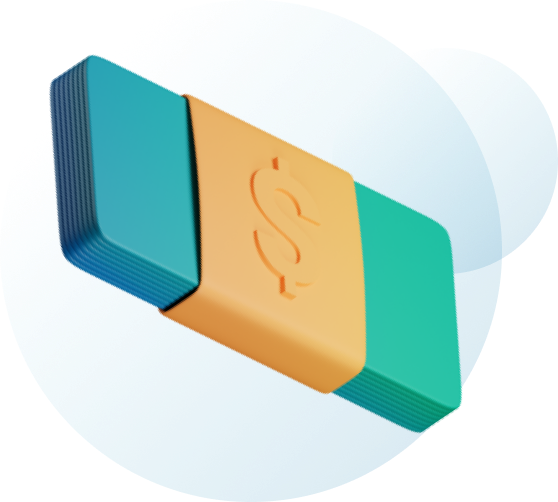Introduction
Your elbow’s been aching again. It’s not a sharp pain; it’s more like a nagging soreness that creeps in when you’re lifting a coffee mug or twisting a doorknob. Sound familiar?
You might assume it’s a sports injury, something only tennis players or weekend warriors deal with. But here’s the truth: tennis elbow doesn’t discriminate. You don’t need a racket in hand to end up with outer elbow pain that makes everyday tasks feel strangely difficult.
In this guide, we’ll unpack what’s really going on when your elbow starts to protest. We’re talking causes, symptoms, treatment options, and more. Whether you work with tools, type all day, or simply got unlucky, this breakdown’s for you.
What Is Tennis Elbow?
So what exactly is tennis elbow? The medical term is lateral epicondylitis, which might sound more intimidating than the injury itself.
At its core, this condition is all about inflammation and microtears in the tendons that anchor your forearm muscles to the bony bump on the outside of your elbow, the lateral epicondyle. Specifically, the extensor carpi radialis brevis tendon tends to take the hit.
This isn’t the kind of injury that happens in one dramatic moment. Instead, tennis elbow is a repetitive strain injury. That’s key. It develops over time through repeated motions, overuse, or even poor form during seemingly harmless activities.
And no, it’s not just tennis players. The name’s misleading. More on that in a minute.
Who Gets Tennis Elbow and Why?
You’d think this condition would stick to athletes, right? But actually, many people with tennis elbow have never even picked up a racket.
Who’s at risk?
- Manual workers: Carpenters, plumbers, painters. Anyone doing repetitive gripping or twisting.
- Hobbyists: Think musicians, knitters, gardeners, or DIY enthusiasts. One wrong move, repeated often, can set it off.
- Office dwellers: Yes, typing counts. Poor ergonomics and lots of mouse use can strain those tendons.
- Middle-aged adults: Most people who develop tennis elbow are between 35 and 55. But it can hit younger or older, too.
- Other risk factors: Smoking, obesity, poor lifting technique, or even just doing the same thing too often without a break.
You don’t need to do something wrong to develop it. Sometimes, your body just decides it’s had enough.
Symptoms of Tennis Elbow
Let’s talk about how this condition actually feels.
The hallmarks:
- Pain or burning on the outside of the elbow
- Stiffness in the elbow, especially in the morning
- Swelling near the bony part of the elbow
- Radiating discomfort that moves down your forearm
The pain usually builds over time, though in some cases, it can feel sudden, especially if you just had a particularly intense activity. One arm is usually affected, but bilateral cases aren’t unheard of, especially in people with repetitive jobs.
What’s sneaky about tennis elbow is how deceptively minor the pain seems at first. Then bam, it gets in the way of everything.
What Causes Tennis Elbow?
The big culprit here? Overuse.
Specifically, repetitive motions that involve wrist extension, gripping, or rotation, like turning a screwdriver, swinging a hammer, or yes, serving a tennis ball. Over time, these motions create tiny tears in the tendon. Your body tries to repair them, but sometimes inflammation sets in instead.
Common causes:
- Repetitive lifting (especially with the palm facing down)
- Poor technique in sports or work activities
- Working without breaks or rest periods
- Using tools that vibrate
- Awkward wrist posture during computer use
Occasionally, a single traumatic event, like banging your elbow or straining it while lifting something, can set it off. But most of the time, it’s death by a thousand repetitions.
How It’s Diagnosed
If your elbow’s been hurting for more than a few weeks, it’s worth getting it checked out. The sooner you start managing it, the better.
What to expect at the doctor’s:
- Physical exam: Your provider will likely press on the outside of your elbow, ask you to extend your wrist against resistance, and evaluate your grip.
- Imaging:
Tennis elbow is usually diagnosed through clinical evaluation, and imaging helps when things aren’t clear-cut or don’t improve.
- X-rays: To rule out arthritis or bone spurs.
- MRI or ultrasound: To check for tendon degeneration or tears.
- EMG: If nerve involvement is suspected (sometimes pain overlaps with conditions like radial tunnel syndrome).
Tennis elbow is usually diagnosed through clinical evaluation, and imaging helps when things aren’t clear-cut or don’t improve.
Treatment Options
You’ve got options, and the good news is that most people recover without surgery.
A. Conservative (Non-Surgical) Treatments
These are the go-to methods when tennis elbow is caught early:
- RICE: Rest, Ice, Compression, Elevation. The classic.
- NSAIDs: Ibuprofen or naproxen can reduce pain and inflammation.
- Bracing: Forearm straps can offload pressure on the tendon.
- Activity modification: Avoid movements that trigger pain.
- Physical therapy: Strengthening the forearm, improving flexibility, and retraining movement patterns can help prevent recurrence.
Don’t underestimate PT, it’s a cornerstone of recovery.
B. Advanced Non-Surgical Interventions
If standard treatments aren’t cutting it, other options include:
- Platelet-rich plasma (PRP): Uses your own platelets to stimulate healing in the tendon.
- Corticosteroid injections: Provide quick relief, but aren’t ideal long-term.
These treatments can give your recovery a nudge, especially if pain lingers.
C. Surgical Options
When pain just won’t quit, think six months or longer, surgery may be considered.
Surgeons typically remove degenerated tissue and sometimes reattach the tendon. Recovery involves physical therapy and can take several months, but most people regain full function.
Recovery and Prognosis
Recovering from tennis elbow isn’t always a straight line. Some people bounce back in a few weeks. Others need the better part of a year.
What affects healing?
- How early you start treatment
- Whether you keep aggravating the tendon
- Your age and overall health
- Commitment to rehab
With the right approach, most people fully recover, and many return to their previous activities without limitations. Just go easy. Gradual return is key.
Conclusion
That nagging elbow pain? It’s more common than you’d think. And it doesn’t care if you’re a carpenter, a chef, or someone who types emails for a living.
Tennis elbow, a repetitive strain injury, can feel frustrating, but it’s absolutely treatable. The trick is not to wait. When the outer elbow starts acting up, don’t push through it, hoping it’ll magically disappear.
Getting help early from a musculoskeletal expert can make a world of difference in how fast and how well you heal.
At Upswing Health, we specialize in helping people like you get back to moving, working, and living without elbow pain weighing you down.
FAQs
Do I need a brace?
A brace can help offload stress from the tendon and ease discomfort during activity. It's not a cure but a helpful tool during recovery.
What treatments can I do at home?
Rest, ice, gentle stretching, and over-the-counter NSAIDs are great first steps. Avoid aggravating motions, and don't skip rest days.
Can I lift with this injury?
You should avoid heavy lifting, especially anything that causes pain, until your symptoms improve. Lifting with poor form can make things worse.
Is virtual PT helpful?
Guided virtual physical therapy through platforms like Upswing Health can provide personalized exercises and coaching, all from the comfort of home.



